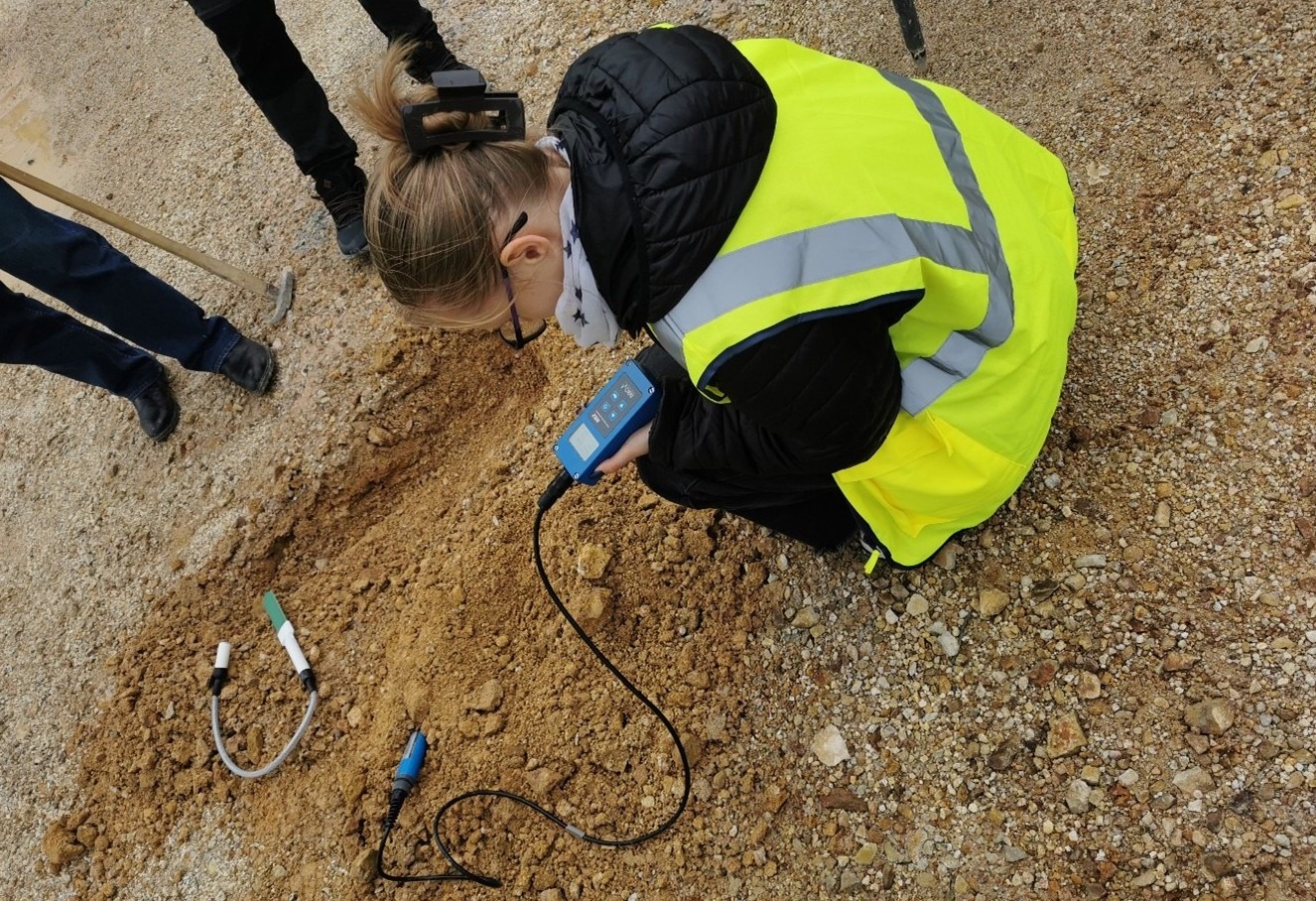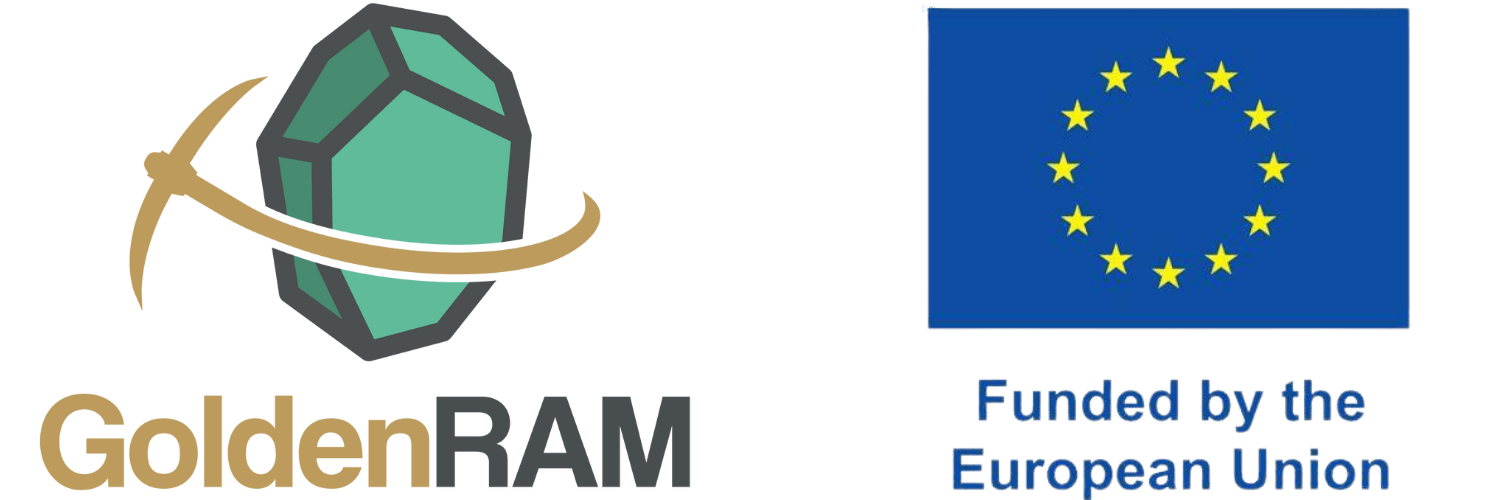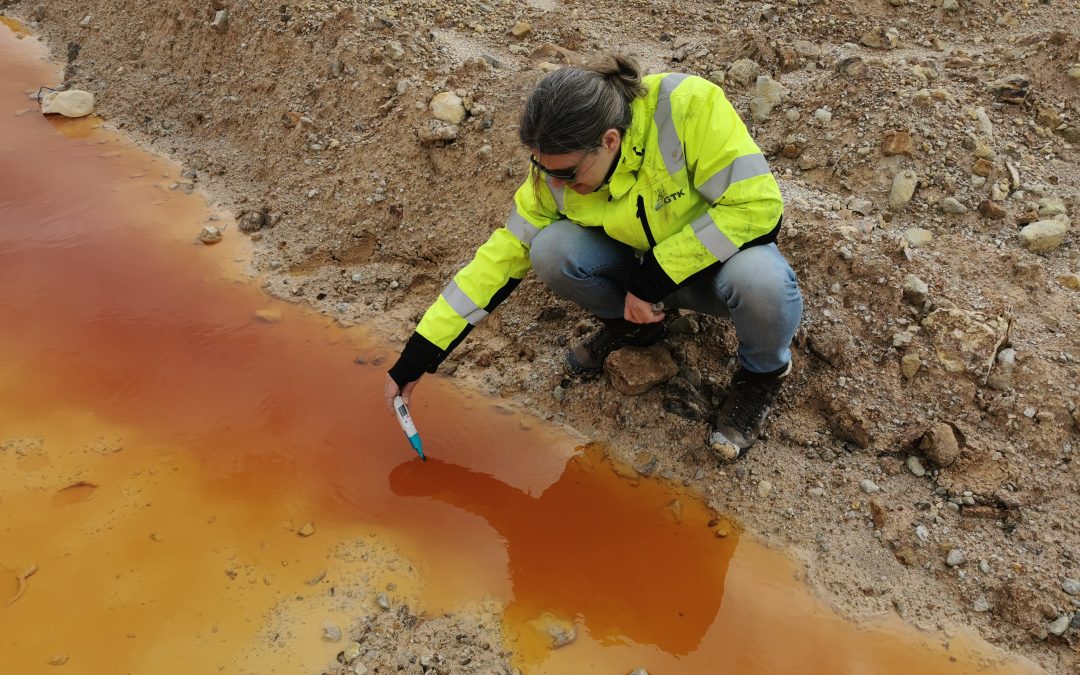On 20 May 2025, as GoldenRAM partner CUPRUMIN marked its 48th anniversary, consortium teams were on the ground at key locations, including the Roșia Poieni open pit, the Valea Șesei tailings pond, and the Valea Cuibarului secondary raw material deposit, in a mission to install and test environmental monitoring equipment. Organised by CUPRUMIN, UTCN, VTT and GTK, the activity entailed data collection that will help calibrate satellite-based moisture monitoring and contribute to GoldenRAM’s AI-driven platform for safer, more informed mining operations.
Blending cutting-edge satellite technology with on-site sensing, this field campaign is an important step forward in GoldenRAM’s drive to deliver smarter, real-time monitoring of mining environments.
Installing Long-Term Soil and Water Sensors
One of the primary goals of the visit was to install TOMST soil moisture and temperature sensors in two strategic locations: the Valea Cuibarului secondary raw material deposit and the Valea Sesei tailings pond. These robust devices are designed to last up to 20 years in the field and collect data every 15 minutes, crucial for understanding how soil conditions fluctuate over time.

Sensor for recording humidity and temperature
Each sensor was buried at a depth of 30 cm in carefully prepared pits. To ensure accurate data collection, the sensors were placed horizontally with the extension cables left above ground for easy data retrieval. By 2025, a total of 19 TOMST sensors will be deployed across the site.
The data collected will be essential for calibrating satellite imagery and improving the moisture index monitoring algorithms used by the GoldenRAM platform.

Collecting the data from the sensor
On-Site Measurements: From Soil Moisture to pH
Alongside the sensor installations, the team also carried out a series of precise environmental measurements using portable analytical instruments:
- IMKO TRIME Sensors: Used to measure soil moisture, temperature, and electrical conductivity (EC). These readings help assess the soil’s total dissolved salts, a key indicator of potential contamination. With custom calibration for different soil types, the IMKO device delivered real-time readings across multiple sample points.

IMKO probe measurement
- XRF-555: A handheld X-Ray Fluorescence device was used to determine the elemental composition of soil samples. In just 25 seconds per reading, the XRF provided a snapshot of chemical elements by XRF, crucial for identifying potential risks or material changes in secondary raw materials deposits.

XRF identifing the elements in the sample
- Testo206 pH Meter: Equipped with a built-in temperature sensor for greater accuracy, this device helped identify the pH levels in small surface water bodies, such as mini acid ponds, which may indicate acid mine drainage.
From Field to Platform
All collected data, including time-stamped readings of moisture levels, temperature, and conductivity, will be fed into structured datasets for analysis. These will become key input layers for the GoldenRAM Platform AIKPs, enabling smarter predictive models for slope stability, environmental monitoring, and risk management at mining sites.
As fieldwork continues throughout 2025, this growing network of sensors and on-the-ground data will strengthen GoldenRAM’s mission to support more resilient and environmentally conscious mining operations across Europe.
Cover image: pH determination of a mini acid pond formation

